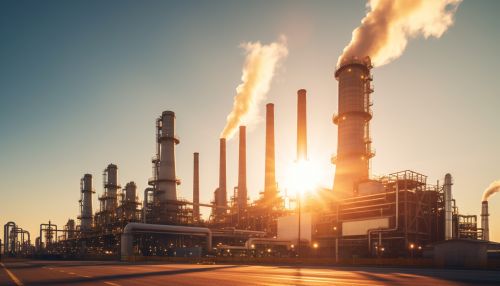Artificial Photosynthesis and Carbon Capture Technologies
Introduction
Artificial photosynthesis is a chemical process that replicates the natural process of photosynthesis, a process that converts sunlight, water, and carbon dioxide into carbohydrates and oxygen. The term "artificial photosynthesis" is commonly used to refer to any scheme for capturing and storing the energy from sunlight in the chemical bonds of a fuel (a process known as "solar fuel"). Photocatalytic water splitting converts water into hydrogen ions and oxygen, and is a major research topic in artificial photosynthesis. Light-driven carbon dioxide reduction is another process studied, which replicates natural carbon fixation.


Carbon Capture Technologies
Carbon capture and storage (CCS) technologies are aimed at mitigating global warming by capturing carbon dioxide from the atmosphere and large-scale, stationary sources like power plants, and storing it away safely so that it does not affect the atmosphere. Carbon sequestration is the process involved in carbon capture, where carbon dioxide is removed from the atmosphere and held in solid or liquid form. Carbon capture and storage technologies can be very effective at reducing the emission of carbon dioxide into the atmosphere.
Artificial Photosynthesis
Artificial photosynthesis is a promising technology that uses sunlight to produce energy-dense fuels directly from carbon dioxide and water. This process is an attractive way to reduce greenhouse gas emissions and produce clean energy. The process involves the use of a photocatalyst and a photosystem to capture sunlight and convert it into chemical energy.
Photocatalysts
Photocatalysts are materials that absorb light and use the energy to drive chemical reactions. They are a crucial part of artificial photosynthesis systems and are often made from semiconductors. The photocatalyst is responsible for capturing sunlight and using the energy to split water molecules into hydrogen and oxygen.
Photosystems
Photosystems are the light-harvesting complexes of the photosynthetic membrane. They capture photons of light and convert them into chemical energy. In artificial photosynthesis, researchers aim to create artificial photosystems that can efficiently capture light and use the energy to drive chemical reactions.
Carbon Capture and Artificial Photosynthesis
Carbon capture and artificial photosynthesis are two promising strategies for reducing greenhouse gas emissions and combating climate change. By capturing carbon dioxide from the atmosphere and converting it into useful fuels, these technologies can help to reduce our reliance on fossil fuels and promote a more sustainable energy future.


Challenges and Future Directions
While there is great potential for artificial photosynthesis and carbon capture technologies, there are also significant challenges that need to be overcome. These include finding efficient and cost-effective methods for capturing carbon dioxide, developing photocatalysts that can efficiently convert sunlight into chemical energy, and creating artificial photosystems that can effectively mimic the natural process of photosynthesis.
Despite these challenges, the field of artificial photosynthesis and carbon capture is rapidly advancing, and there is optimism that these technologies can play a significant role in our energy future.
